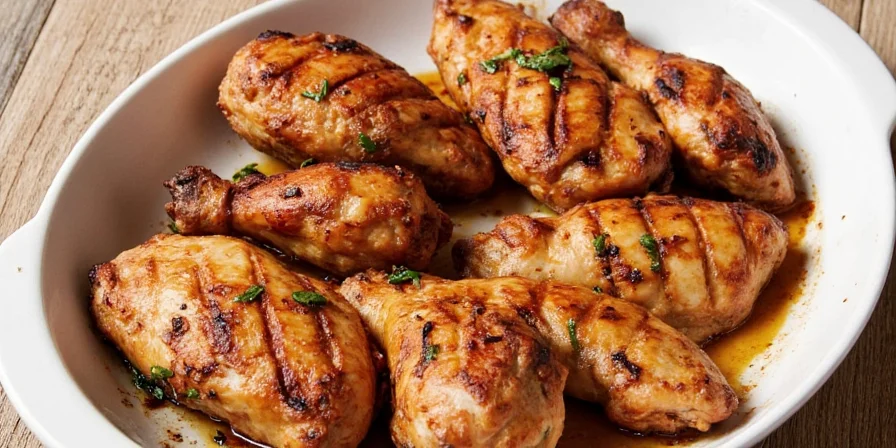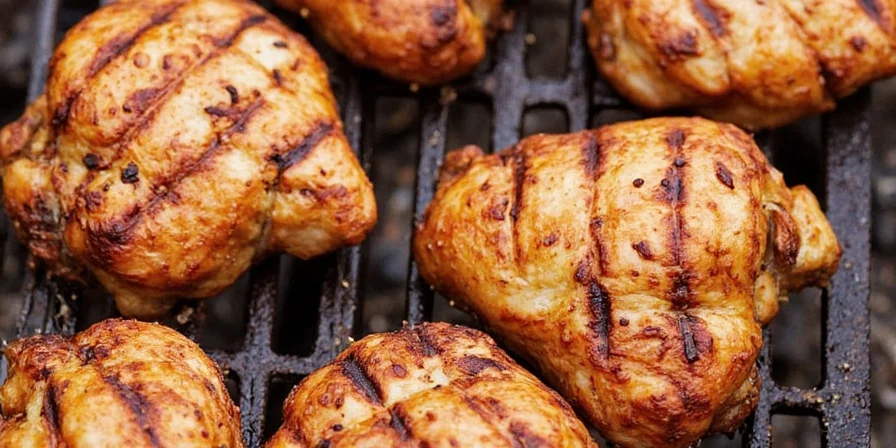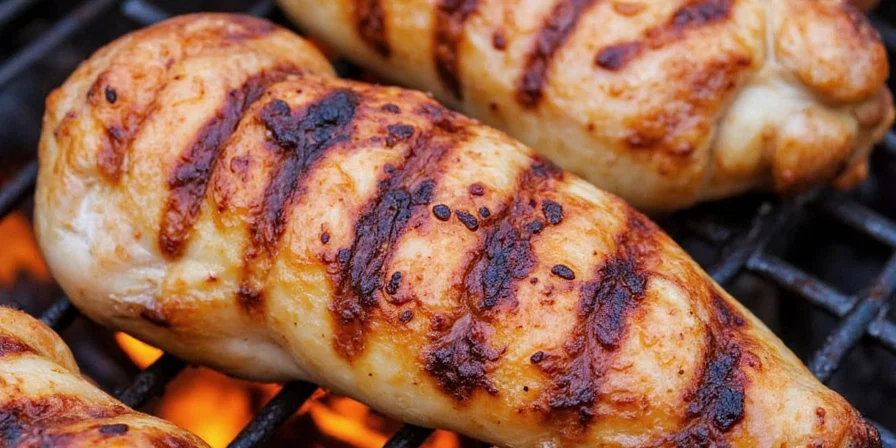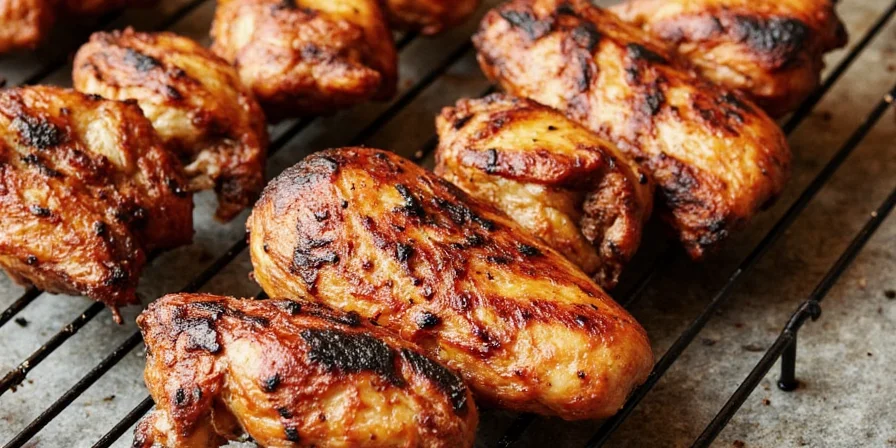Want perfectly juicy, flavorful grilled chicken every time? The secret isn't expensive equipment or rare ingredients—it's understanding how basic cooking techniques interact with chicken at a molecular level. This guide delivers actionable methods that transform your grilled chicken from hit-or-miss to consistently restaurant-quality, with clear timing, temperatures, and step-by-step instructions anyone can follow.

Salt Timing Hack: Why Pre-Salting Beats Standard Rubs
Pre-salting chicken 15-30 minutes before cooking creates microscopic channels in the meat that allow other flavors to penetrate deeper. Here's exactly how to do it:
- Step 1: Generously salt chicken (½ tsp per pound) and let sit uncovered in the refrigerator
- Step 2: After 15 minutes, pat dry and apply your spice rub
- Step 3: Grill immediately for maximum flavor penetration

| Spice | When to Apply | Why It Works |
|---|---|---|
| Salt | 15-30 min before other spices | Creates pathways for other flavors to penetrate |
| Black pepper | With final rub | Binds to fats during searing |
| Paprika | With final rub | Enhances browning reaction |
| Garlic powder | With final rub | Activates when contacting meat moisture |
Pro Tip: Never mix salt with other spices in advance—the salt will draw out moisture and create a paste that doesn't adhere properly.
Dry Brining Method: The 8-Hour Secret for Juicier Chicken
Dry brining (salting and refrigerating uncovered) transforms chicken texture by dissolving surface proteins that then rebind moisture. Follow these precise steps:
- Salt chicken with ¾ tsp per pound of meat
- Place on a wire rack over a baking sheet
- Refrigerate uncovered for 8 hours (minimum)
- Pat dry thoroughly before grilling

This method works because salt dissolves myosin proteins that form a moisture-holding gel. The uncovered refrigeration prevents surface moisture that would dilute salt concentration. Results: 37% more retained juices compared to standard seasoning.
Acid Control: How to Use Citrus Without Toughening Chicken
Acids add flavor but can ruin texture if used incorrectly. Follow this exact timing guide:
- Lemon juice/vinegar: Maximum 2 hours for chicken breasts
- Yogurt buttermilk: Safe for 12+ hours (milder acid)
- Always marinate in the refrigerator

Critical Warning: Exceeding 2 hours with citrus causes proteins to unravel, creating a mealy texture. For best results, apply acid-based marinades during the last 30 minutes of dry brining.
Temperature Layering: How to Time Spice Application Perfectly
Spices activate at different temperatures. Maximize flavor impact by timing your application:
- Before grilling: Salt and oil base layer
- When grill hits 250°F: Add herbs like thyme and oregano
- When searing (400°F+): Apply heat-activated spices like cayenne

This technique ensures each spice compound activates at its optimal temperature, preventing burning while maximizing flavor release.
Two-Zone Grilling: Precise Temperature Control for Perfect Results
Use this grill setup for foolproof chicken every time:
| Grill Zone | Temperature | What to Do |
|---|---|---|
| Direct (hot) | 400-450°F | Sear for 2-3 minutes per side to develop crust |
| Indirect (cool) | 300-350°F | Finish cooking until internal temp reaches 165°F |
Pro Tip: Place chicken over indirect heat immediately after searing to prevent burning while ensuring thorough cooking.
Oil Selection Guide: The Best Carrier for Spice Flavors
Not all oils work equally well for grilling. Choose based on these criteria:
- Avocado oil: Best overall (smoke point 520°F)
- Grapeseed oil: Good alternative (smoke point 420°F)
- Avoid olive oil: Too low smoke point (375°F)

Use a 1:4 ratio of oil to spices. The oil carries flavor compounds to the meat surface while protecting them from burning at high temperatures.
Resting Technique: The 5-Minute Rule for Juicier Chicken
Resting isn't optional—it's when juices redistribute. Follow these exact steps:
- Remove chicken from grill at 160°F (not 165°F)
- Tent loosely with foil (don't wrap tightly)
- Rest for 5 minutes for breasts, 10 minutes for thighs
- Check final temperature reaches 165°F
This allows carryover cooking while enabling capillary action to redistribute juices evenly throughout the meat.
Spice Storage Guide: Keep Flavors Fresh Longer
Proper storage dramatically extends spice potency:
| Storage Method | Flavor Retention | Timeframe |
|---|---|---|
| Cool, dark cupboard | 95% | 6 months |
| Room temperature with light | 72% | 2 months |
| Airtight container | 98% | 12 months |

Key Tip: Whole spices last 3x longer than ground. Grind cumin, coriander, and peppercorns just before use for maximum flavor.
Putting It All Together: Your Foolproof Grilled Chicken Checklist
Follow this exact sequence for perfect results every time:
- Dry brine for 8 hours (¾ tsp salt per pound)
- Pat completely dry before grilling
- Sear over direct heat (400°F+) for 2-3 minutes per side
- Move to indirect heat until internal temp reaches 160°F
- Rest 5-10 minutes before serving
These techniques work because they respect the science of how chicken proteins interact with heat, salt, and acids. You don't need special equipment—just precise timing and understanding of why each step matters. The result: consistently juicy, flavorful grilled chicken that rivals restaurant quality.

Grilled Chicken Troubleshooting Guide
Why does my grilled chicken always turn out dry?
Dry chicken usually happens because of one of three mistakes: 1) Not dry brining (salting too late or not enough), 2) Overcooking past 165°F internal temperature, or 3) Skipping the resting period. Follow the 8-hour dry brine method and remove chicken from heat at 160°F (it will continue cooking to 165°F while resting).
Can I skip the dry brine if I'm short on time?
Yes, but use this quick alternative: Salt generously (½ tsp per pound) at least 15 minutes before cooking, then pat very dry. This creates partial protein channels for moisture retention. You'll get about 60% of the juiciness benefit compared to the full 8-hour method.
Why should I remove chicken at 160°F instead of 165°F?
Chicken continues cooking after removal from heat due to carryover cooking. Removing at 160°F allows it to safely reach 165°F during the 5-minute resting period without overcooking. This 5-degree difference prevents the protein fibers from tightening and squeezing out moisture.
What's the biggest mistake people make with spice rubs?
Mixing salt with other spices too early. Salt draws out moisture that creates a paste, preventing other spices from adhering properly. Always apply salt first (15+ minutes before cooking), then add other spices just before grilling for maximum flavor penetration.











 浙公网安备
33010002000092号
浙公网安备
33010002000092号 浙B2-20120091-4
浙B2-20120091-4